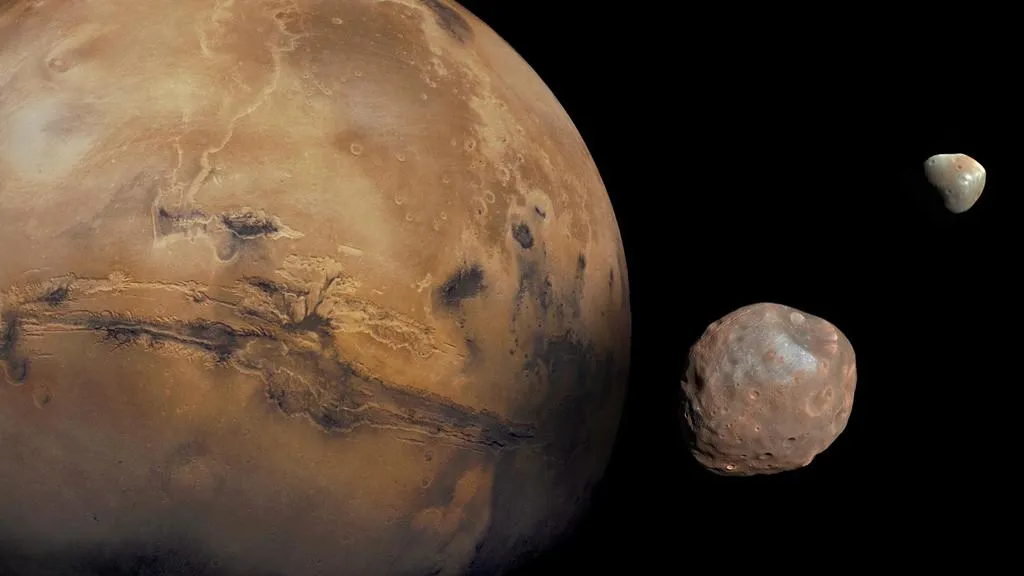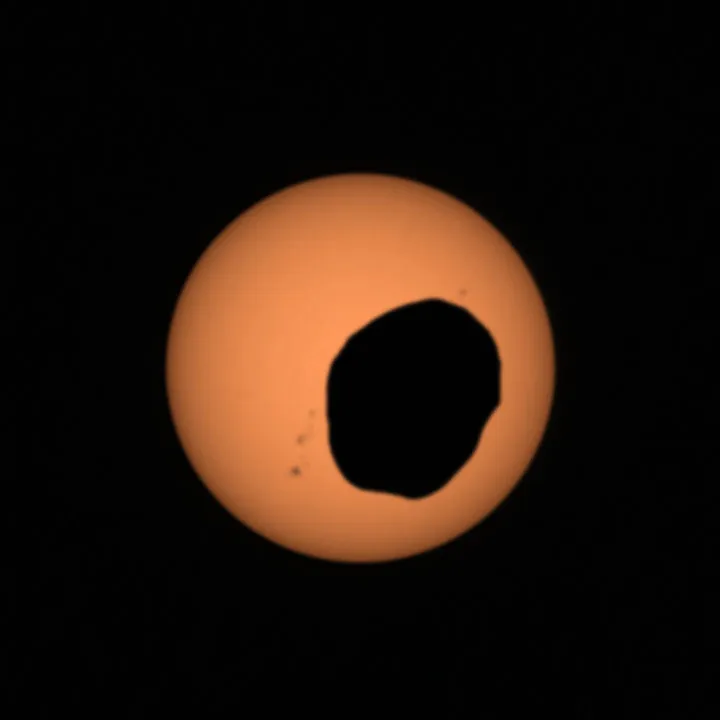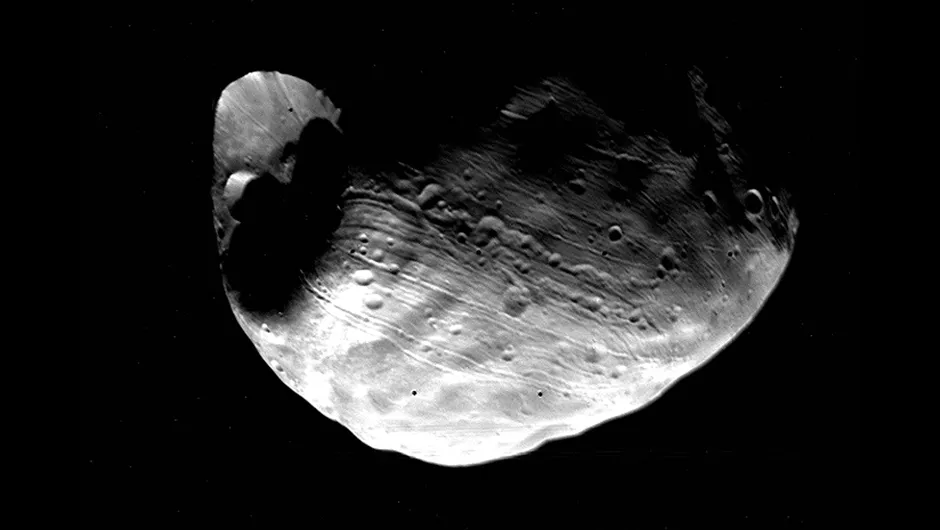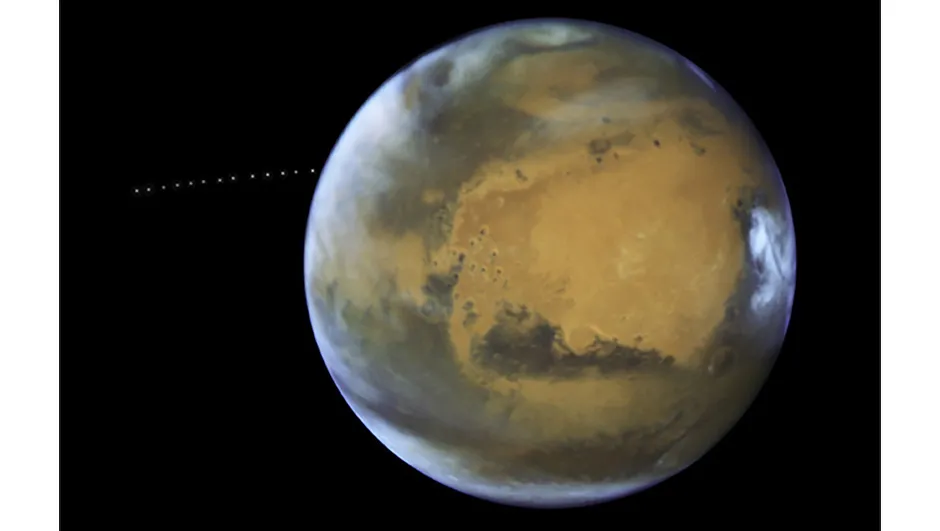The origin of Mars’s two moons, Phobos and Deimos, has long been a matter of debate.
The idea that they are captured asteroids has been popular in the past, but they both orbit close to Mars’s equatorial plane.
As a result, most planetary scientists accept it's more likely Mars's moons formed from a disc of rock and dust circling the planet.
Such a circum-Martian disc was probably formed of ejecta from a giant impact into the Red Planet.

Phobos's chaotic past
Phobos is spiralling ever closer to Mars due to tidal effects and, this larger and inner of the two moons will probably be broken apart by these forces within a few tens of millions of years.
But Phobos’s past could have been even more dramatic.
The traditional hypothesis is that Phobos formed much further out, at between five and six Mars radii.
Over the course of billions of years, it migrated inwards to its current orbit at 2.7 times Mars’s radius.
However, in 2017 an alternative possible history was proposed.

NASA/JPL-Caltech/GSFC/Univ. of Arizona
This posited a process whereby multiple cycles of inwardly spiralling moons become fragmented into a disc (as is thought will happen with Phobos), at the outer edge of which a new, smaller moon forms.
Gravitational interactions with the ring will initially drive this moon into a wider orbit, until the ring dissipates and the moon spirals inward again, only to become fragmented itself.
Such a process could have repeated around six times over Mars’s history, with each new moon being about a fifth the mass of the one that came before.

If this is the case, then Phobos is just the latest incarnation in this cycle of creation and destruction, and is only around 100 million years old.
This could also explain the mystery of why Deimos has an orbit that is circular but tilted to a high inclination.
Interactions with the inner ring would have excited this moon’s inclination.

Is Phobos ancient or newborn?
It’s a compelling idea.
But is there evidence in the dynamics of the Mars–Phobos–Deimos system today that would support the traditional view of a distant Phobos slowly migrating inwards, or this new model of planet–ring–planet cycles?
Or, to put it another way: is Phobos ancient or newborn?
Matija Ćuk at the SETI Institute in Mountain View, California, and his two colleagues at the department of physics and astronomy at Purdue University in Indiana, used computer simulations to model the past orbital evolution of Phobos.
They found that both competing hypotheses are compatible with the present orbits of Phobos and Deimos.
And yet, the data available can’t be used to determine how far out Phobos formed, or its age.
They do note that other observations support the recent formation of Phobos from a ring.

The overall shape of the moon matches that expected to have been produced by tidal forces at 3.3 times Mars’s radius – where the outer rim of a disc would lie.
But Ćuk says that more information is needed to be able to tell for sure.
The Martian Moons eXploration (MMX) probe, a JAXA mission to bring back samples of the surface of Phobos, will launch in 2026 and may allow scientists to put limits on the age of the moon.
Lewis Dartnell was reading Two Possible Orbital Histories of Phobos by Matija Ćuk, Kaustub P Anand and David A Minton. Read it online at: arxiv.org/abs/2503.12691.
This article appeared in the June 2025 issue of BBC Sky at Night Magazine

